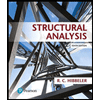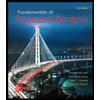
Concept explainers
Left thumb rule in levelling.
Explanation of Solution
Left thumb rule is applicable in leveling for the measurement of vertical angles. In order to use the instruments effectively we must follow some of the basic principles.
Most of the latest instruments use three screw leveling head for initial rough leveling. In leveling a three-screw head, the telescope is rotated until it is over two screws that is, horizontal to the two screws, and then by using the thumb and the first finger of each hand in order to adjust the opposite screws simultaneously fixing the bubble approximately at the center (if the left thumb is turned to the left as moving right thumb to right it will turn the bubble towards left, similarly moving left thumb to right and right thumb to left will make the bubble to move towards right). The whole procedure is repeated with the telescope at 90oso that it is over the third remaining screw just opposite the other two. Now, a lot of time gets wasted while adjusting the bubble with the first attempt.A simple rule that assists in centering bubble, as a bubble follows the left thumb rule when turning the screws gets centered by turning the screws one after the other. Furthermore, the inward and outward movement of the foot screws will easily center the instrument and telescope need not to be rotated throughout the process.
Want to see more full solutions like this?
Chapter 5 Solutions
Elementary Surveying: An Introduction To Geomatics (15th Edition)
- F U₁ ΕΙ ΕΙ H F₁₂ U₂ ΕΙ EI H F ΕΙ ΕΙ H Undeformed Configuration 3 Deformed Configurationarrow_forwardCivil engineering quantities question Answer the question and at the end put notes on how a BOQ is constructed.arrow_forwardPlanning is underway for the construction of a new railway section between Stockholm and Uppsala as part of the "Fyra spår Uppsala" project. Your task is to carry out a preliminary slope stability analysis for a planned road underpass beneath the new railway. The analysis concerns the eastern slope at the underpass. The designed clay slope has a depth of 12.5 meters and a width of 27.0 meters. According to geotechnical investigations, the soil consists of homogeneous, overconsolidated clay with a saturated unit weight of 15 kN/m³ and an undrained shear strength of 35 kPa. The groundwater table is at ground level (0.0 m). According to Figure 1, the most critical slip surface is circular, with the center of rotation (point O) located 4.0 meters above the current ground surface (0.0 m). The slip surface intersects the ground at the toe of the slope and 6.0 meters east of the slope crest. Questions to Answer Calculate the factor of safety (F) against rotational failure using an undrained…arrow_forward
- Question 6. Water enters a reach of rectangular channel where y₁ = 0.5 m, b = 7.5 m, and Q = 20 m³/s (Figure P10.39). It is desired that a hydraulic jump occur upstream (location 2) of the sill and on the sill critical conditions exist (loca- tion 3). Other than across the jump, losses can be neglected. Determine the following: (a) Depths at locations 2 and 3 (b) Required height of the sill, h (c) Resultant force acting on the sill (d) Sketch the water surface and energy grade line. (e) Describe the nature and character of the jump. 1 2 3. harrow_forwardQuestion 5. This figure shows a cross section of an aqueduct that carries water at 50 m³/s. The value of Manning's n is 0.02. Find the bottom slope. 45° 4.0 m 7.0 m-arrow_forwardQuestion 4. A rectangular, unfinished concrete channel of 30-ft width is laid on a slope of 7 ft/mi. Determine the flow depth and Froude number of the flow if the flowrate is 350 ft³/s.arrow_forward
- Question 3. A lake discharges into a steep channel. At the channel entrance the lake is 4 m above the channel bottom. Neglecting losses, find the discharge for the following geometries: (a) Rectangular section, b = 4 m (b) Trapezoidal section, b = 3 m, angle = 60° (c) Circular section, d = 3.5 m.arrow_forwardQuestion 7. A popular sharp-crested weir for use in low-flow situations is the V-notch weir, as shown below. When these weirs are designed, the equation for determining the flowrate by neglecting the velocity head of the upstream flow can be written as Q = CH", where C is a coefficient of discharge and is a function of the notch angle (0) and n is a weir constant. The constants C and n must be determined experimentally for a given weir. In logarithmic form, the weir equation is log Q = n log H + log C. Assume we have a flume in the lab where we can experimentally explore the relationship between Q and H for this weir by adjusting the flowrates. Develop an appropriate experiment to determine n and C' (the weir discharge coefficient) for the weir used. Write the experimental procedure steps and measurement readings that are needed to determine these coefficients empirically. Hint: Please refer to your lab manual. Draw down Nappe H V notch weir Weir plate sharp-crested weirarrow_forwardPlease solve the question by hand with a detailed explanation of the steps.arrow_forward
- Please solve the question by hand with a detailed explanation of the steps.arrow_forwardGiven the properties of the wide flange: Property Value d = 530 mm bf = 210 mm tw = 18 mm tf = 16 mm Compute the value of rt defined as the radius of gyration of compression flange plus 1/3 of the compression web area about y-axis.correct answer: (50.52 mm)arrow_forwardUsing a relevant image such as a 3D architectural rendering of a warehouse landscape in Edmond.arrow_forward

 Structural Analysis (10th Edition)Civil EngineeringISBN:9780134610672Author:Russell C. HibbelerPublisher:PEARSON
Structural Analysis (10th Edition)Civil EngineeringISBN:9780134610672Author:Russell C. HibbelerPublisher:PEARSON Principles of Foundation Engineering (MindTap Cou...Civil EngineeringISBN:9781337705028Author:Braja M. Das, Nagaratnam SivakuganPublisher:Cengage Learning
Principles of Foundation Engineering (MindTap Cou...Civil EngineeringISBN:9781337705028Author:Braja M. Das, Nagaratnam SivakuganPublisher:Cengage Learning Fundamentals of Structural AnalysisCivil EngineeringISBN:9780073398006Author:Kenneth M. Leet Emeritus, Chia-Ming Uang, Joel LanningPublisher:McGraw-Hill Education
Fundamentals of Structural AnalysisCivil EngineeringISBN:9780073398006Author:Kenneth M. Leet Emeritus, Chia-Ming Uang, Joel LanningPublisher:McGraw-Hill Education
 Traffic and Highway EngineeringCivil EngineeringISBN:9781305156241Author:Garber, Nicholas J.Publisher:Cengage Learning
Traffic and Highway EngineeringCivil EngineeringISBN:9781305156241Author:Garber, Nicholas J.Publisher:Cengage Learning





